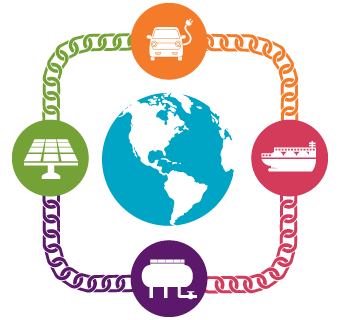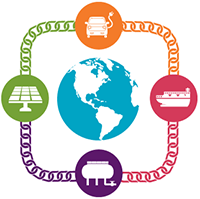By: Ankur K. Tohan, Buck B. Endemann, and Tad J. Macfarlan
On April 15, 2020, the Montana federal district court issued an Order in Northern Plains Resource Council v. U.S. Army Corps of Engineers, No. 4:19-cv-00044-BMM (D. Mont.) (NPRC v. Corps) that may have far reaching implications for energy development projects across the United States.
In a case involving the Keystone XL Pipeline Project, the Montana court vacated the U.S. Army Corps of Engineers’ (Corps) Nationwide Permit (NWP) 12. The Court concluded that because the Corps failed to consult under the Endangered Species Act (ESA) Section 7 when it reissued NWP 12 in 2017, the permit is not valid and the Corps may not authorize work under the terms and conditions of NWP 12.
Background, Key findings, and Order
The Corp’s 2017 Reissuance of NWP 12. When the Corps reissued NWP 12 (along with all other NWPs) in 2017, it determined that ESA consultation with the U.S. Fish and Wildlife Service and National Marine Fisheries Service (the “Services”) was not required because the reissuance of NWPs has “no effect” on ESA-listed species or critical habitat.
Court’s Key Findings. The court held that the Corps’ “no effect determination and resulting decision to forego programmatic consultation proves arbitrary and capricious in violation of the Corps’ obligations under the ESA.” The court concluded that the Corps cannot circumvent ESA Section 7(a)(2) consultation requirements by relying on project-level review (e.g., by non-federal entities) under NWP General Condition 18’s preconstruction notification (PCN) requirement. The court reasoned that (1) General Condition 18’s PCN requirement fails to ensure that the Corps fulfills its obligations under ESA Section 7(a)(2) because it delegates the Corps’ initial effect determination to non-federal permittees.
Court’s Order. Based on the court’s findings, the Order (1) vacated NWP 12; (2) remanded NWP 12 to the Corps to initiate consultation now; and (3) enjoined the Corps from authorizing work under NWP 12 until consultation is completed.
Potential Implications if a Motion for Reconsideration or Stay is not Granted
Immediate Impact on Projects with NWP 12 Authorization. The Order creates immediate uncertainty for project proponents needing NWP 12 authorization. If the Order is not stayed or appealed, the Corps could reopen programmatic consultation with the Services, which could take several months or longer to complete and, once completed, may be subject to further litigation. In addition, the Order could be leveraged by other plaintiffs targeting the Corps’ other NWPs that rely on General Condition 18. Given the uncertainty, developers will need to consider their current permitting options, which may include other NWPs, individual 404 permits (which trigger NEPA, NHPA, and ESA), or project redesign to avoid impacts to regulated waters.
Current Status
On April 27, 2020, the Corps filed motions for expedited briefing and consideration for a partial stay of the Order pending an appeal. The Corps’ motion asks the Court to stay “those portions of its April 15, 2020, Order that vacate NWP 12 and broadly enjoin the Corps from authorizing any dredge or fill activities under the permit”; or at “the very least, the Court should stay its vacatur and injunction as they relate to anything other than the Keystone XL pipeline.”
**UPDATE**: On April 28, 2020, U.S. District Court Judge Brian Morris denied the Corps’ motion for a temporary administrative stay of the court’s vacatur, injunction, and remand orders. Judge Morris ordered Plaintiffs and the Corps to complete briefing on an expedited basis by May 8, however, on the Corps’ broader request for a stay pending appeal, which should give permit-seekers and holders additional insight into the immediate future of NWP 12.
**UPDATE May 7, 2020**: On May 7, 2020, Plaintiffs filed their opposition to the Corps’ Motion for Partial Stay Pending Appeal. Significantly, Plaintiffs agree with the Corps to ask the Court to revise the remedy that the was ordered on April 15, 2020. Specifically, Plaintiffs propose that the Court modify these remedies as follows.
(1) narrowing the vacatur of NWP 12 to a partial vacatur that applies to the construction of new oil and gas pipelines, thereby keeping NWP 12 in place during remand insofar as it authorizes non-pipeline construction activities as well as routine maintenance, inspection, and repair activities on existing NWP 12 projects; and
(2) narrowing the injunction to enjoin the Corps from authorizing any dredge or fill activities for Keystone XL under NWP 12. This relief would afford appropriate protection for endangered and threatened species and their critical habitats while minimizing any potential disruption claimed by Defendants.
**UPDATE May 12, 2020**: On May 11, 2020, the Montana District Court issued its ruling on the Corps’ motion to stay the court’s original Order issued on April 15, 2020.
The Court denied the motion to stay Order pending an appeal to the 9th Circuit. However, the Court adopted Plaintiffs’ proposal that the Court revise the scope of remedy in the original Order to apply only to new and gas construction projects. The Court narrowed the scope vacatur and injunction as follows:
- NWP 12 is vacated as it relates to the construction of new oil and gas pipelines pending completion of the consultation process and compliance with all environmental statutes and regulations. NWP 12 remains in place during remand insofar as it authorizes non-pipeline construction activities and routine maintenance, inspection, and repair activities on existing NWP 12 projects.
- The Corps is enjoined from authoring any dredge or fill activities for the construction of new oil and gas pipelines under NWP 12 pending completion of the consultation process and compliance with all environmental statutes and regulations. The Corps remains able to authorize dredge or fill activities for nonpipeline construction activities and routine maintenance, inspection, and repair activities on existing NWP 12 projects.
**UPDATE June 17, 2020**: On June 15, 2020, the US Solicitor General, on behalf of the US Army Corps of Engineers, filed an application for a stay with the US Supreme Court.
The application seeks a stay of the April 15, 2020, order issued by the United States District Court for the District of Montana (as amended May 11), pending an appeal of that order to the Ninth Circuit Court of Appeals and, if necessary, pending a future appeal to the US Supreme Court.
The Solicitor states that the district court “had no warrant to set aside NWP 12 with respect to Keystone XL, let alone for the construction of all new oil and gas pipelines anywhere in the country.”
The Solicitor points to the fact that when plaintiffs brought the original lawsuit to challenge the Corps’ alleged use of NWP 12, they limited their claims and relief to the use of NWP 12 to authorize construction of the Keystone XL pipeline. According to the filing, plaintiffs expressly disclaimed any request for vacatur of NWP 12, or an injunction, extending beyond Keystone XL itself; and made no “meaningful effort to establish Article III standing to challenge the potential application of NWP 12 to crossings by any other specific proposed pipelines.” Despite these facts, the Solicitor argues, the district court first vacated NWP 12 on a nationwide basis, and then in an amended order narrowed the scope of vacatur to all new oil and gas projects.
The Solicitor argues that a stay is appropriate because the district court order went well beyond what the plaintiffs original sought, is inconsistent with Article III and traditional principles of notice and equity, and was wrongly decided on ESA grounds. The Solicitor argues that the “Corps reasonably determined that merely re-issuing NWP 12 would have no effect on listed species or critical habitat — and therefore did not trigger any consultation requirement under the ESA — because the regulatory scheme and conditions in NWP 12 ensure that any necessary consultation occurs on an activity-specific basis.”
The US Supreme Court is evaluating the application.
**UPDATE July 6, 2020**: On July 6, 2020, the U.S. Supreme Court ruled that the Montana District Court Order (as amended on May 11) is stayed, except with regard to the Keystone XL pipeline. Until the Ninth Circuit issues a ruling on the appeal — and any subsequent appeal to the U.S. Supreme Court — of the District Court Order by the U.S. Army Corps of Engineers, the order remains in effect for Keystone XL but does not apply to other entities or parties.



